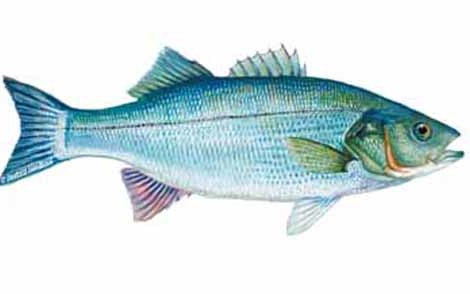Seafood Handbook Finfish Page
The Seafood Handbook is the most comprehensive seafood directory available online. Featuring more than 100 of the most common seafood species in the U.S. market, the Seafood Handbook is the ultimate guide to seafood sourcing and preparation, brought to you by the editors of SeaFood Business magazine. And it’s free!
For each type of seafood species, there is a comprehensive overview of the item, its origin, history, availability, product attributes, nutritional value and cooking tips, along with an original hand-drawn depiction.
Explore Finfish by searching here:
Around 540 flatfish species belong to the taxonomic order Pleuronectiformes, meaning “sideswimmer.” Flatfish are found throughout the world, though the most commercially important family, Plueronectidae, is concentrated in northern waters. Yellowtail is the most important Atlantic Coast… Read More
The slender kingklip, a member of the cusk eel family, comprises four species: red (G. chilensis), golden (G. blacodes), South African (G. capensis) and black (G. maculatus). Depending on the species, kingklip can reach 5 to 6 feet long and 50 pounds, but most found on the market average 10 pounds.… Read More
One of the most wide-ranging of the five Pacific salmon species, chums are landed in commercial quantities in the eastern North Pacific from Del Mar, California, to the Arctic Ocean’s Mackenzie River and south to Honshu, Japan. Commercially caught chums run from 6 to 12 pounds. Almost all chums… Read More
Sea bass, often marketed by U.S. chefs under the Italian name branzino, is a prized fish in Europe, where it is largely a recreational catch. Small commercial fisheries exist in the Mediterranean. The gear used to catch these bass includes beach and purse seines, trawl nets, trammel nets, longlines… Read More
Feeding on some of the world’s fastest tunas and billfish, the mako shark is at the very apex of the marine food chain. It’s also among the best-tasting of the hundreds of shark species around the world. There are two mako species: Isurus oxyrinchus, or shortfin mako, and I. paucus, or longfin… Read More
After the wild striped bass stocks nearly collapsed, the aquaculture industry responded by engineering this hybrid. The new species was established in 1967 by crossing the anadromous wild striper (Morone saxatilus) with white bass (M. chrysops), a fish that lives in both estuarine and fresh water.… Read More
Though two fish species are marketed as escolar, L. flavobrunneum is considered the true escolar internationally, and the lesser-valued Ruvettus pretiosus is more widely known as oilfish or castor oil fish. Though considered a succulent species by those familiar with it, escolar’s association… Read More
When trade with Vietnam resumed in 1994, U.S. seafood importers started shipping fillets from a Vietnamese catfish called basa, or bocourti. But most of what’s sold in the market today as basa isn’t basa. Real basa, P. bocourti, is one of 21 species in the Pagasiidae family of catfish found… Read More
More than a dozen hake and whiting species inhabit temperate and cold waters of the Northern and Southern Hemispheres. Quality varies, depending upon species and handling. There are two separate families of hake, Merluccidae and Gadidae, but Merluccius is most common in the U.S. market,… Read More
A relative newcomer to the U.S. seafood market, barramundi is finding a place both at high-end restaurants and mid-scale retailers, where its versatility and eco-friendly reputation have earned it a following. Australia’s Aborigines dubbed this species barramundi, meaning river fish with large… Read More
















